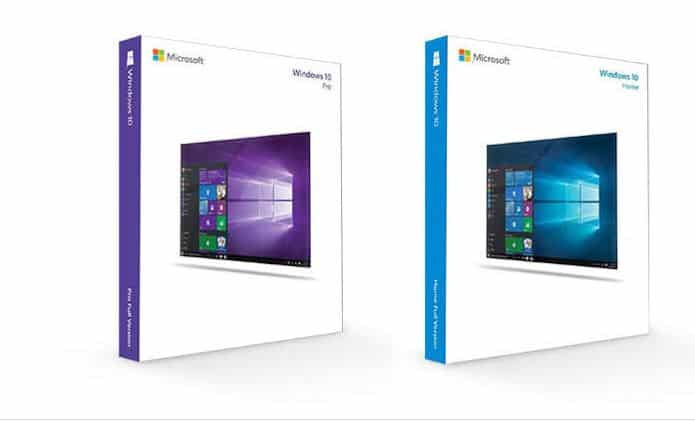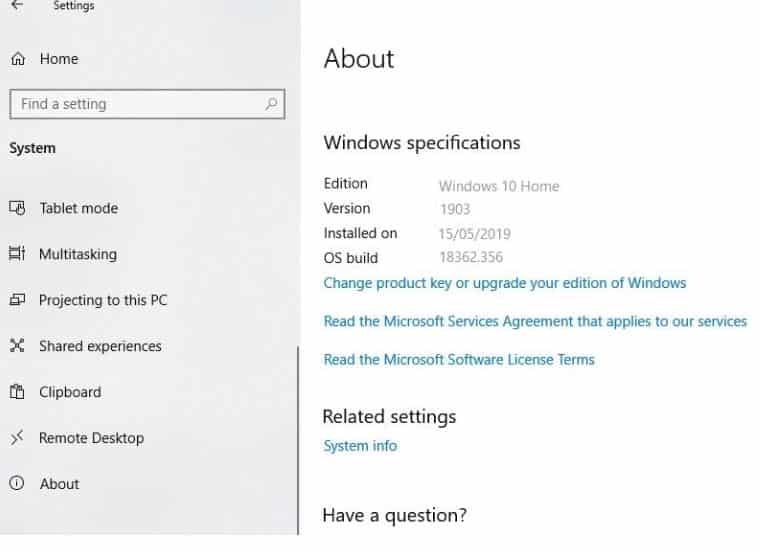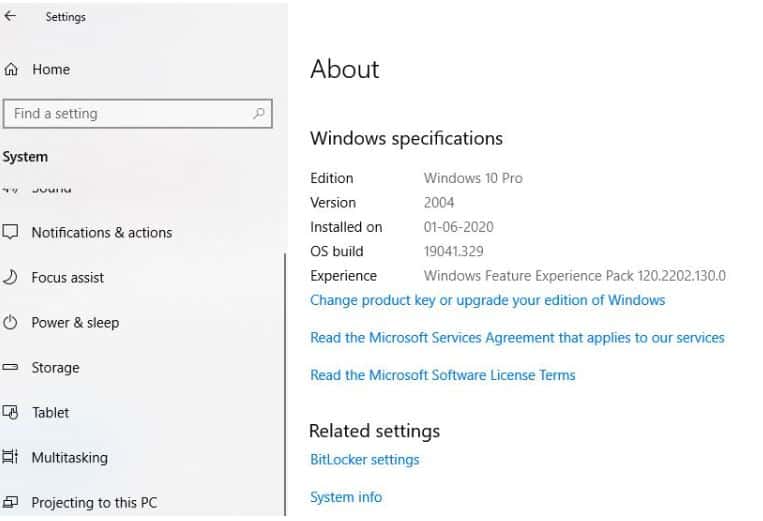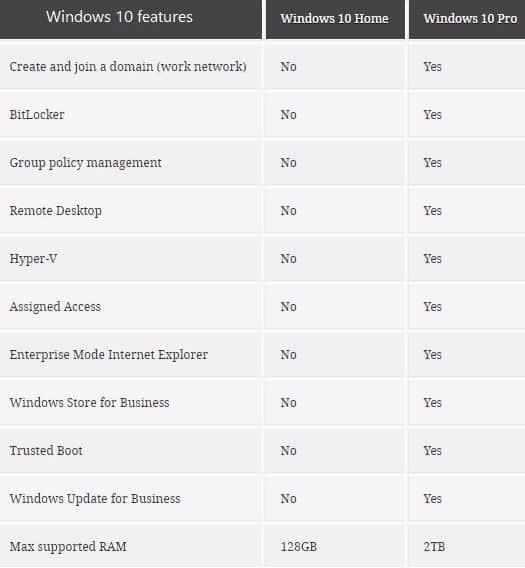Windows 10 Home is designed for people to use on their personal machines, while Windows 10 Pro is meant for work. But what’s the key difference between the two? Let’s take a look. Windows 10 Pro has more features than Home, including domain joining, Group Policy Management, BitLocker encryption, and Hyper-V virtualization. So if you need those features for work, you’ll want to get Windows 10 Pro.
If you’re in the market for a new Windows 10 computer, you’ll want to remember that there are two types of Microsoft software available: Windows 10 Home and Windows 10 Pro. Depending on your needs, you’ll want to select the right operating system model for yourself.
However, if you can’t decide between both Windows 10 Home and Windows 10 Pro editions, then we recommend you do some research and compare the two software types. For your convenience, we have created a comparison between the two.
The main difference between Windows 10 Home and Pro is that Pro is designed for power users and provides more features. If you’re not sure which version of Windows 10 to get, here’s a breakdown of the differences to help you decide.
Compare Windows 10 Home vs. Pr0

Although Windows 10 Home and Windows 10 Pro share a lot of features, only a few features such as BitLocker, Update for Business, Remote Desktop, and Assigned Access are supported by Windows 10 Pro. In addition, Windows 10 Pro is more secure and also allows the device to connect to a domain, which isn’t possible with a Windows 10 Home device. Consequently, Windows 10 Pro offers more features than its Home counterpart, making it the more expensive option.
Features of Windows 10 Home

- This OS has an improved clutter-free Start Menu.
- It is powered by all the features of the popular Windows 8 features.
- With this software, the user will get the full-fledged version of the digital voice assistant system Cortana which
- was earlier only available for Windows phones.
- The new Battery Saver feature of the Windows 10 Home will make your system more energy efficient by
- reducing the background activities on the gadgets.
- Home users have access to all the new Virtual Desktop and Snap assist options with up to four apps at the same time.
- Moreover, you will be able to use the Continuum feature which helps you in quickly switch from desktop to tablet mode or vice versa.
Features of Windows 10 Pr0

- The Pro version has elegant connectivity and privacy features.
- The advanced Assigned Access 8.1 offers users an extensive lock for user accounts to prevent them from using
- specific apps.
- On the other hand, BitLocker is one of the most powerful disk encryption systems for Windows 10 Pro users
- which allows users to encrypt their external USB drives data for an extra layer of protection.
- This software will present you with numerous seamless connectivity tools also.
- Windows 10 Home and Pro can start Remote Desktop Connection sessions, but only PCs running Windows 10 Pro can be remotely controlled.
- Virtualization is another benefit of Windows 10 Pro
- Windows Group Policy feature is only limited to pro users only which allows administrators to limit what users can do using a centralized set of roles. This includes security elements like password complexity, and whether they can access network resources, or install applications.
Windows 10 Home Vs Pro Differences

Although both these software share a few features, such as Cortana assistance, Windows App Store, Windows Ink, and Windows Hello, they are designed for entirely different purposes. Home is designed to perform basic functions, while Pro is designed to handle complex problems. Few components that distinguish Home and Pro include.
Windows 10 Pro is designed for more scientific and mathematical operations than Windows 10 Home. This is because Pro has a hyper V system, while Home doesn’t contain any advanced features.
The Pro version of this software program has extra security and privacy features installed, such as BitLocker, which encrypts all USB drives for added safety. However, the Home version doesn’t have this same level of encrypted security.
Microsoft offers different versions of Windows 10 for different types of users. The Pro version is for business users and includes updates for Microsoft Business services. The Home version does not include these updates.
Pro provides an easy way for users to connect to their remotely working team via Remote Desktop. However, Windows 10 Home users unfortunately cannot take advantage of this feature.
Assigned Access is a security feature available to Windows 10 Pro users that limits the apps a user can access. This is yet another example of the additional security measures available to Pro users. Windows Home users do not have access to this feature.
- The Pro version has numerous security and protection features. Windows Information Protection is a very useful data protection software that is available on Windows 10 Pro only. WIP is a very interesting tool that protects against potential data leaks when inexperienced employees are handling the company’s confidential data.
- Pro users can use the mobile device management system which provides them an alternative method to manage processes using cloud-based management. And, Home users lack this feature.
Another advantage that Windows Pro users have over Home users is that they can find, manage and distribute apps to any Windows devices in bulk using the Microsoft Store for business. - There is numerous advanced update for business are introduced by Microsoft which can provide access to all the latest Microsoft technologies. But, these updates are only for Pro users.
Pro employees can use a single login across Windows 10, Office 365, and other Microsoft services, making logons and passwords easier to manage. However, this shared login works on PCs running on Windows 10 Pro only. - Only Windows 10 Pro support joining (or creating) a domain, which allows PCs to be added to a corporate network. With Windows 10 Home, you can’t do this and you’re pushed to use a Microsoft account rather than a local user account. This means any laptop or PC you want to use at work and access files on servers will almost certainly need to be running Windows 10 Pro.
How to Upgrade Windows 10 Home to Windows 10 Pro
To check which version of Windows 10 you have, you can use the winver command. For example, if you’re running the Windows 10 Home edition, you’ll see something like this:
- Press Windows + I keyboard shortcut to open Settings.
- Pick Update & Security, then Click Activation.
- Click Go to Store. You are now brought to the Store listing for Windows 10 Pro.
Related Posts:
- Asus Laptop Keeps Freezing And Not Responding Windows 10
- How Do I Delete a Family Account on Windows 10?
- Razer’s Gaming Laptop Inch
- Arctis 3 – Fix Windows 10 Microphone Volume Too Low

Hello, My name is Shari & I am a writer for the ‘Outlook AppIns’ blog. I’m a CSIT graduate & I’ve been working in the IT industry for 3 years.